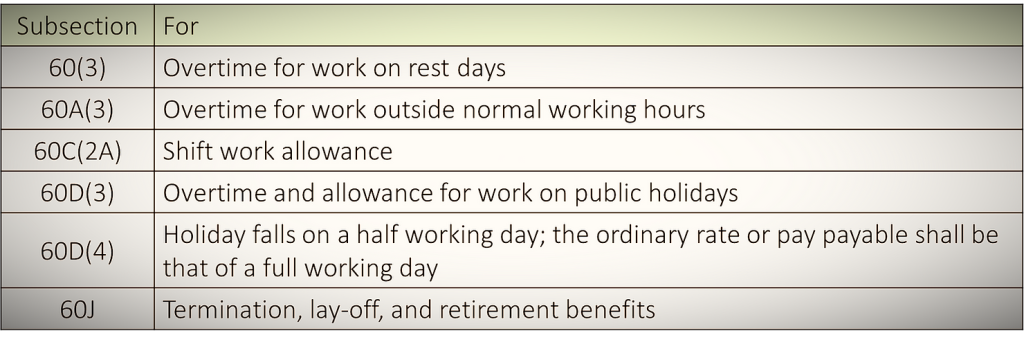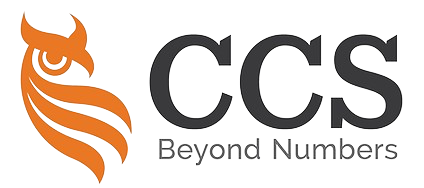Disclaimer: The information in this article should not be construed as legal advice, and we assume no responsibility or liability for any decisions made or actions taken from this article should not be construed as legal advice, and we assume no responsibility or liability for decisions made or actions taken as a result of reading this article.
This guide is meant to briefly introduce the statutory requirements outlined in the Malaysian Employment Act and some common practices applied to employment contracts, wages, and benefits when hiring employees in Malaysia.
Who Does the Employment Act Apply To?
The employment contract between an employer and an employee in Malaysia is the primary framework for connecting the two parties. Parties are generally free to enter into whatever kind of contract they see fit, provided that they conform with the Employment Act and some other constraints.
The Malaysia Employment Act (EA) 1955 is the piece of legislation that governs all private-sector labour policies.
The Malaysian Employment Act does not apply to all people. Instead, it applies only to “employees” as defined under the Act. It is important to note that the EA only covers the following two categories of employees as stated in the First Schedule of the EA:
- Any person who has entered into a contract of service;
- Any person who [collectively known as “manual worker”], irrespective of the amount of wages he earns in a month, has entered into a contract of service with an employer in pursuance of which:-
- is engaged in manual labour;
- is involved in the operation or maintenance of any mechanically propelled vehicle operated;
- supervises or oversees other employees engaged in manual work;
- is involved in any capacity in any vessel registered in Malaysia; or
- is employed as a domestic servant.
Non Applicability
However, the following EA provisions will not apply to non-manual worker employees earning more than RM4,000/month:

- Suggest to Read: Effective 1 Sep, Amendments to the Employment Act 1955 will take effect.

Importance of Employment Contract
The terms and conditions of employment are spelt out in an employment contract, an agreement between an employee and an employer.
An employment contract may also be referred to as an employment agreement, appointment letter, offer letter, etc.
In Malaysia, having a written employment contract is not mandatory unless the contract of service for a specified period exceeding one month or for the performance of a specified piece of work, where the time reasonably required for the completion of the work exceeds or may exceed one month.
In most organisations, only personnel in high management positions can negotiate the terms of their employment contracts.
Breach of contract occurs when either the employee or the employer violates one or more of the provisions outlined in the employment contract. Either party can do this. The majority of employment contracts contain several key terms, such as the following:
- Appointment position
- Duration of employment contract for a fixed term contract.
- Date of employment commencement
- Remuneration package
- Hours of work
- Employee benefits
- Probation clause, if applicable.
- Notice of Termination [s 10(2)]
It is important to note that the list above is not exhaustive.
It is illegal for an employment contract to have terms and conditions that are less beneficial to the employee than the Employment Act mandates. [s 7A]

Employee Benefits
In addition to their regular salary, employees might get various sorts of Employee Benefits from their employers.
Common employee Benefits in Malaysia may include:
- sick leave,
- annual leave,
- maternity leave,
- incentives and bonuses,
- contributions to retirement funds,
- housing allowances,
- healthcare benefits,
- allowances for children’s education,
- relocation allowance,
- childcare benefits, and
- transportation reimbursements,

Salary & Bonus – Statutory Requirement
‘Wages‘ means the basic wages and all other payments in cash payable to an employee for work done in respect of his employment contract, excluding
- the cost of housing, food, fuel, light, water, medical care, or any approved amenity or service.;
- EPF or any contribution for retrenchment, termination, lay-off or retirement scheme, etc.;
- any travelling allowance;
- any reimbursement of expenses;
- any gratuity; or
- any annual bonus.
Even though the Employment Act does not include a provision mandating that each employee be paid a minimum wage, employers must adhere to the Minimum Wage Order.
In a layman’s terms, even though the Employment Act does not specify a minimum wage and leaves it up to the employer and the employee to discuss and agree upon the amount of the salary, the employee is still not allowed to be paid less than the amount that is mandated by the minimum wages order.
- Refer to: The Minimum Wage is officially RM 1,500 from May 1
The salary needs to be paid no less than once every month [s 18(1)] and no later than seven days after the end of the wage period [s 19(1)].
Wages for work done on a rest day, gazetted public holiday, and overtime shall be paid not later than the last day of the next wage period.
The entire amount of wages is to be paid through bthe ank [s 25(1)]
According to the Employment Act of Malaysia, the payment of bonuses is not mandated in any capacity.

Hours of Work & Overtime – Statutory Requirement
In general, an employee shall not be required under his contract of service to work[s 60A(1)]:-
- more than five consecutive hours without a period of leisure of not less than thirty minutes duration;
- more than eight hours in one day;
- in excess of a spread over period of ten hours in one day;
- more than 45 hours in one week [Employment (Amendment) Act 1955]
- Suggest to Read: How to Determine Hours of Work in Malaysia
Overtime pay is only for those employees earning below RM 4,000/month [Employment (Amendment of First Schedule) Order 2022].
According to the Employment Act, employees are not allowed to work more than 5 hours without taking a 30 minutes break.
Employees are not permitted to work more than 12 hours in a single day, including any time spent performing overtime. There are exceptions to this rule:
- accident, actual or threatened, in or concerning his place of work;
- work, the performance of which is essential to the life of the community
- work essential for the defence or security of Malaysia;
- urgent work to be done to machinery or plant; or
- an interruption of work which it was impossible to foresee
Employees are eligible for one rest day per week.

Public Holidays – Statutory Requirement
Taking into account the country’s wide cultural variety, Malaysia’s national holidays are established to cater to a large number of distinct ethnic groupings.
These include:
- Hari Raya Puasa and Hari Raya Haji
- Deepavali
- Christmas Day,
- New Year’s Day,
- Chinese New Year
It is important to note that the list above is not exhaustive.
Every employee shall be entitled to [s 60D(1)]:
- 11 paid gazetted public holidays at his ordinary rate of pay on the following days in any one calendar year, five of which shall be:
- the National Day;
- the Birthday of the Yang di-Pertuan Agong;
- the Birthday of the Ruler or the Yang di-Pertua Negeri, as the case may be, of the State in which the employee wholly or mainly works under his contract of service, or the Federal Territory Day if the employee wholly or mainly works in the Federal Territory;
- the Workers’ Day; and
- Malaysia Day; and
- on any day appointed as a public holiday for that particular year under section 8 of the Holidays Act 1951
By agreement between the employer and employee, any other day or days may be substituted for one or more of the remaining gazetted public holidays not stated in the above paragraph.

For example:
If the employer observes Chinese New Year and Awal Muharram as part of the remaining six gazetted public holidays.
The employer may grant the employee any January 31, 2022, as a paid public holiday in substitution for Awal Muharram according to Section 60D (1A) of the Employment Act.
If a public holiday falls on a rest day or any other public holiday, the following day shall be considered the paid holiday.

Example:
If the company observed Christmas Day as a public holiday, yet Sunday is traditionally a day of rest for the company,
Since Christmas Day in 2022 will fall on a Sunday, which is a day of rest, the day after Christmas Day, which will be December 26, 2022, will be treated as a paid holiday instead.

Annual Leave – Statutory Requirement
The amount of annual leave is dependent on tenure of service; an employee shall be entitled to paid annual leave of [s 60E]:

To qualify for annual leave, the employee must have served at least twelve months with the employer.
If the employees have not completed twelve months of continuous service with the same employer during the year in which their contract of service terminates, their entitlement to paid annual leave shall be in direct proportion to the number of completed months of service.
The employee’s annual leave will be forfeited unless otherwise specified in the employment agreement:
- in the case of dismissal for misconduct [s 14(1)(a)],
- absenteeism from work without permission for more than 10% of the working days during the twelve months of continuous service, or
- if the leave is not used up within 12 months after the end of every twelve months of continuous service,
Sick Leave – Statutory Requirement
The statutory sick leave entitlements outlined in the Employment Act are as follows [s 60F]:-

The employee must provide a medical certificate issued by the company doctor (if appointed), by any other registered medical practitioner, or by a medical officer if the company’s panel doctor is unavailable.
In addition, if an employee needs to be hospitalised for whatever reason, they are eligible for a paid hospitalisation leave of up to sixty days each calendar year, which must be approved by a registered medical practitioner or medical officer [Employment (Amendment) Act 2021].
Entitlement to the paid sick leave is based on “each calendar year”.

Example:
Peggy has just consented to begin working at a hair salon as a stylist. The 11th of September, 2022 is the day she will start her new job.
Peggy wants to know the minimum number of sick leave she is entitled to receive from the hair salon where she works in 2022.
Since Peggy has worked for the company for less than two years, the number of days of paid sick leave she is eligible for in 2022 will be 14.
In addition, she is entitled to a paid hospitalisation leave of absence for a total of sixty days.
It is irrelevant whether Peggy is a probationary or confirmed permanent employee.

Probation Period – Statutory Requirement
The Employment Act has no clauses that relate to the trial (Probation) period employees go through.
As a Common Practice, the Employees are typically required to complete a trial term of 1 to 6 months. In most cases, a shorter notice period is also reflected in the probation period.
However, Section 20 of the Industrial Relations Act of 1967 requires a “reasonable” or “justifiable” excuse (‘just cause and excuse’) before a probationer’s employment can be terminated.
The end of the probationary period does not always mean the person will be confirmed or even terminated. As a general rule, there is no “automatic confirmation.”
Notice of Termination – Statutory Requirement
Either party can terminate the employment contract by giving a written notice or by paying salary in lieu of notice to the other party [s 12/13].
The length of this notice must be the same for both the employer and employees, and it must be written into the terms of the contract of service.
If there is no such written provision, it must not be less than the following depending on the employee’s tenure of employment:-

Employees can use any annual leave accrued to reduce the required notice period.
However, if one party willfully violates the employment contract terms, the other party may be terminated from their position without prior notice from either party.
It is common practice to grant a notice term of two weeks during the probationary period and a notice period of one month following the confirmation of employment.
Since the Employment Act states that both parties are permitted to give salary in lieu of notice, and the employee can use any annual leave accrued to reduce the required notice period, this will create practical difficulties that the employer would face if such a scenario occurred, as the employer may not be able to get a suitable replacement in a very short period.

Employment Termination – Statutory Requirement
Employers are not allowed to hire or fire employees “at will.”
Article 5(1)[1] of the Federal Constitution on Liberty of the Person provides as follows:
‘(1) No person shall be deprived of his life or personal liberty save in accordance with the law.’
This principle even extends to employees on probation, as exemplified in the Court of Appeal case of Khaliah Abas v. Pesaka Capital Corp Sdn Bhd [1997] 3 CLJ 827.
Therefore, in Malaysia, the laws governing employment and termination of employment are founded on the principle of justice.
Because Malaysia does not have an “at-will employment” system, when an employer fires an employee, they are required to provide “just cause and excuse,” do so in good faith, and ensure that the employee is treated fairly throughout the process.
These requirements are outlined in Section 20 of the Industrial Relation Act 1967.
Acceptable reasons for Termination
In most cases, the court won’t step in unless it determines that the termination (dismissal) was done unfairly.
An allegation of unfair termination can be avoided if the employee was terminated for “just cause or excuse”.
But the Act does not define “just cause and excuse”.
Whilst ‘just cause or excuse’ is not defined by the statute, valid reasons for dismissal include gross misconduct on the part of the employee, redundancy, poor performance, and negligence.
The court has defined misconduct as any behaviour incompatible with the faithful discharge of duties or an act that negatively affects the responsibilities that employees owe to their employers.
In general, misconduct includes but is not limited to stealing, fighting at work, always being late, constantly intoxicated, sexual harassment, failing to follow safety measures, etc.
And of course, the Court will also distinguish between major and minor misconduct.

Maternity Leave & Allowance – Statutory Requirement
Maternity Leave
With the Employment (Amendment) Act 2021, effective September 1, 2022. all female employees are entitled to 98 consecutive days [before September 1, 2022: 60 days] of maternity leave in respect of each confinement.
Confinement means parturition resulting after at least twenty-two weeks of pregnancy in the issue of a child or children, whether alive or dead, and shall for this Act commence and end on the actual day of birth and where two or more children are born at one confinement shall commence and end on the day of the birth of the last-born of such children, and the word "confined" shall be construed accordingly.
However, the amended new Section 37aa permits any woman (including women entitled to maternity leave pay) to return to work during the maternity leave period.
Maternity Allowance (Pay)
A female employee shall not be entitled to any maternity allowance if:
- she has five or more surviving children at the time of her confinement; or
- she has not worked for the employer:
- for at least 90 days in the nine months before her confinement; and
- at any point in the four months before her confinement.
Additionally, to be eligible for maternity allowance.
- For the female employee who is about to leave her employment
- If she knows or has reason to believe that she will be confined within four months of the day she leaves, she must notify her employer about her pregnancy before she resigns.
- For the female employee who is still in her employment
- Within the sixty days before her scheduled confinement, she must inform her employer that she will be taking maternity leave.
This notice is required to be delivered by the employee to both the direct supervisor as well as the human resources department.
Additionally, the EA makes it unlawful for employers to terminate an employee because she is pregnant or taking her maternity leave, except under specific circumstances.
A female employee is protected from being terminated if she is absent for up to 90 days post-maternity leave due to illness arising from the pregnancy that renders her unfit to work.
Common Practice
The maternity leave and allowance benefits provided to female employees in the private sector in Malaysia generally adhere to the minimum requirements outlined in the Employment Act described above.

Paternity Leave – Statutory Requirement
Public sector employees are eligible for seven days of paid paternity leave, provided under the Pekeliling Perkhidmatan Bilangan 9 Tahun 2002.
With the Employment (Amendment) Act 2021, effective September 1, 2022, married male employees in the private sector will also be entitled to 7 consecutive days of paternity leave.
The paternity leave shall be restricted to five confinements irrespective of the number of spouses.
A married male employee is entitled to paternity leave from his employer if:
- he has worked for the same employer for at least 12 months before taking paternity leave; and
- he has notified his employer of his spouse’s pregnancy at least 30 days before the expected confinement or as soon as possible after the birth.
EPF / SOCSO / EIS / PCB Contributions – Statutory Requirement
The following statutory contributions are required to be made by the employer under applicable laws:
- Employees Provident Fund (‘EPF’)
- Social Security Organization (‘SOCSO’)
- Employee Insurance System (‘EIS’) Scheme
- Schedular Tax Deduction or ‘Potongan Cukai Berjadual’ (‘PCB’)
Employees Provident Fund (‘EPF’)
Contributions to the EPF are voluntary for foreign employees who work in Malaysia; nonetheless, these employees have the option to participate in the EPF if they so want.
This is because both employees and employers can contribute an amount higher than the mandated minimum rates, which may be found in the Third Schedule of the Act.
Social Security Organization (‘SOCSO’)
Effective January 1, 2019, all Malaysian employers must register their foreign employees working in Malaysia (excluding domestic servants) with the Malaysian Social Security Organisation (SOCSO) and contribute to the Employment Injury Scheme.
Employee Insurance System (‘EIS’) Scheme
The EIS covers only Malaysian citizens and permanent residents.
Schedular Tax Deduction or ‘Potongan Cukai Berjadual’ (‘PCB’)
PCB refers to the process through which companies deduct employees’ monthly tax payments from their employees’ income from employment.

Flexible Working Arrangement – Statutory Requirement
Effective September 1, 2022, the Employment Act allows employees to request “flexible working arrangements” to change their working hours, days of the week, or place of employment.
This, however, is subject to the terms and conditions of the Employment Contract or Company Policy.
The employee can apply in writing, and the employer is compelled to either approve or reject the application within 60 days by notifying the employee in writing and stating the reason for the decision (in the case of a refusal).

Sexual Harassment – Statutory Requirement
According to the EA’s Sections 81A–81G, the laws prohibiting sexual harassment are fundamentally applicable to all employees.
According to the provisions of the New Section 81H, it is the responsibility of employers to display a notice that draws attention to the issue of sexual harassment.
- Suggest to Read:
- New Section 81H – Notice of Sexual Harassment
- Sexual Harassment Prevention Notice

Education & Training – Statutory Requirement
The Employment Act does not mandate that employers provide employees with education and training opportunities as part of their employment responsibilities.
In general, businesses are strongly urged to make available to their employees a variety of chances for training and development, with the goals of enhancing employees’ job competencies and maybe advancing their careers.
In addition, the government of Malaysia offers a variety of programmes to help citizens upgrade their abilities and partially pay the costs of training.
- HRD Corp – https://hrdcorp.gov.my/
- My Spike – https://myspike.my/
Termination or Lay-off Benefits – Statutory Requirement
In most cases, the employer has the legal right to reorganise the company to achieve greater efficiency and convenience, provided that the employer has acted in good faith.
Section 60J of the EA provides that The Human Resource Minister may, by regulations made under EA, provide for the entitlement of employees to and for the payment by employers of:
- termination benefits;
- lay-off benefits;
- retirement benefits.
According to Regulation 6 of the Employment (Termination and Lay-Off Benefits) Regulations 1980, employees have the right to receive the following termination and lay-off benefits, based on the length of time they have been employed by the company:-

- Suggest to Read: The Meaning of “a day’s Wages”

Retirement Benefits – Statutory Requirement
The law does not require employers to pay retirement benefits to their employees unless the benefits are outlined explicitly in the employment contract.
Despite this, on July 1, 2013, the Minimum Retirement Age Act 2012 became law, mandating that an employee’s minimum retirement age shall be 60 years old.
Amendments to the Employment Act 1955
A series of explanations of the Amendments to the Employment Act 1955 was previously posted:-
https://www.ccs-co.com/publications/categories/employment-amendment-bill-2021
Our website's articles, templates, and material are solely for reference. Although we make every effort to keep the information up to date and accurate, we make no representations or warranties of any kind, either express or implied, regarding the website or the information, articles, templates, or related graphics that are contained on the website in terms of its completeness, accuracy, reliability, suitability, or availability. Any reliance on such information is therefore strictly at your own risk.
Keep in touch with us so that you can receive timely updates |
要获得即时更新,请与我们保持联系
1. Website ✍️ https://www.ccs-co.com/ 2. Telegram ✍️ http://bit.ly/YourAuditor 3. Facebook ✍
- https://www.facebook.com/YourHRAdvisory/?ref=pages_you_manage
- https://www.facebook.com/YourAuditor/?ref=pages_you_manage
4. Blog ✍ https://lnkd.in/e-Pu8_G 5. Google ✍ https://lnkd.in/ehZE6mxy
6. LinkedIn ✍ https://www.linkedin.com/company/74734209/admin/






